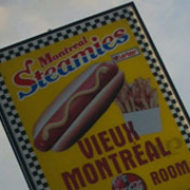Like about a bazillion other people, the iPhone’s worldwide breakout — and the hype around it — has caused me to consider the value of having a convergence device. I experimented once before with the HP iPaq Travel Companion, which is a lovely GPS device but Windows Mobile is incredibly kludgy, especially for things like establishing internet connections and syncing with exchange servers, which is supposedly the point of the thing. The thing did everything but phone calls (except via Skype) but not reliably enough for me to use it regularly. I like the idea of a phone/camera/internet device I can carry around and I even more like the idea of having something hand-sized and lightweight to give me internet access on long trips (for instance, to Australia or Europe) instead of hauling my laptop around the world. In effect, it’s the same thing in a smaller package: the microprocessor in an iPhone, Blackberry, Palm, Nokia, etc. is considerably more powerful than the Toshiba Satellite laptop that was my main computer from about 2000-2003 and spectacularly more powerful than the laptop I took to Washington to research my dissertation. Although there are issues with functions and interface, we’re talking about handheld devices that have the processing power of computers from 10 years ago, maybe more recently. This makes literal something that Ken Wark wrote about in 2000 — that
Cellspace is different from cyberspace and, in a weird way, much more radical. Cellphones create a real break with the suburbia of the soul where the Internet wallows. The Internet piped all manner of gunk into the suburban home. The Net was the telephone, the TV, the newspaper and a radio station all glommed together and plunked down into a suburban space that otherwise remained unchanged apart from the second phone line. Even the cable modem fails to change this basic equation. Its just more gunk, more speed, down the same old pipeline into the same old space.
Cellphones break down space in much the same way that a digital sampler breaks down beats. In cellspace, theres no place that cant be connected to another space. If theres an image that captures this, its the great moment in the movie Three Kings, where Marky Mark finds a cellphone deep in an Iraqi bunker in the middle of the desert, and uses it to call his wife, back home in suburban America.
Wark’s point is that this cellspace phenomenon is happening more outside the United States than within it, and caused him to wonder at whether there is some kind of American exceptionalism to cellphone culture (and we could add Canada too with it’s slow uptake and bad deals for users). What’s changed from then to now is that we’ve gone from two versions of the internet — one on your computer and one on your phone, to a single internet that is accessible from either device.
I’ve been reading a pile of cellphone studies material, in part for my sound seminar, and also just because. A lot of it is on space — togetherness across great distance, separation in spaces of cohabitation. Insert cliches about “virtual” and “real” spaces here and the widening gulf between them even as they coexist. But I think the most interesting aspect of having a functioning internet device that moves through the city is that it completely banalizes the informationalization of space promised by augmented reality. Practices that seemed experimental or avant-garde, or at least practices that have been presented to me as such — electronically tagging spaces, combining maps and navigation in locative media, basically endowing the world with accessible metadata — are suddenly business as usual, or at least potentially so. At least for intellectuals (of any stripe), everything already comes with its own commentary, a truly mobile internet just makes it all the more apparent. But the experience of these devices is and will continue to be less subjective dislocation and more of, well, the same. Thanks to a constant and portable internet connection, it will now be possible to know for certain whether that oversized box of clicky-pens at Costco is really a bargain or not, or to look up a hotel on tripadvisor on a walk by. I’m sure there is somewhere a real example of cellphones atomizing public space; but just as often, the wireless world simply gives a shadowy, ephemeral materiality to affective connections that already existed among spaces.
